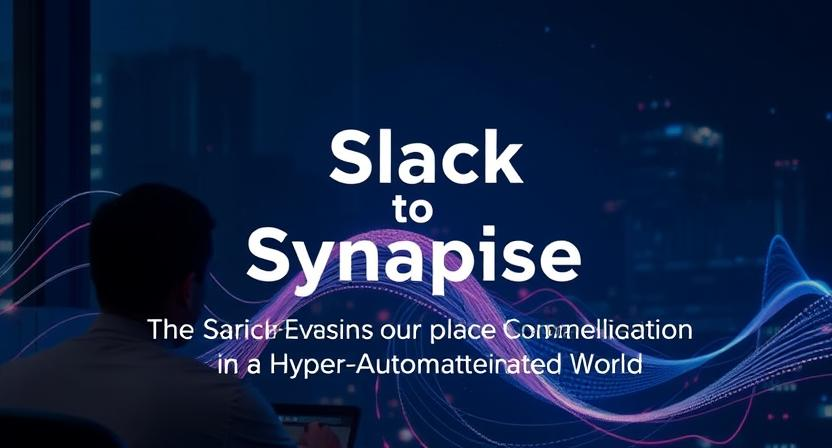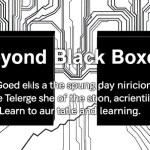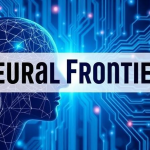In the ever-accelerating race toward digital transformation, the workplace is undergoing a metamorphosis. What began with the migration from email chains to collaborative chat platforms like Slack and Microsoft Teams is now evolving into a hyper-automated communication ecosystem. Here, intelligent assistants don’t just relay messages—they anticipate, negotiate, and optimize team interactions in real-time. As we transition from chat-based communication to brain-like networked systems—what some now call “synaptic collaboration”—the nature of teamwork itself is being rewritten.
The Legacy of Slack and the Rise of Real-Time Communication
Slack, founded in 2013, revolutionized internal communication. With channels for every topic, integrations with dozens of tools, and instant feedback loops, Slack represented a leap forward from the staccato rhythm of email threads. It emphasized transparency, immediacy, and accessibility, enabling distributed teams to function in harmony.
But even as Slack and its peers brought real-time messaging to the mainstream, cracks began to show. The signal-to-noise ratio worsened. Notifications became overwhelming. Important information was buried under emojis and casual banter. Team members found themselves “always on,” fatigued by digital chatter. The platform had outpaced human bandwidth.
Enter the next frontier: hyper-automated, AI-driven communication tools.
Intelligent Messaging: From Passive Tools to Active Collaborators
The next wave of workplace communication is no longer about tools that facilitate messaging. It’s about systems that understand the content, context, and tone of interactions—and can act on them.
Imagine a platform where your communication tool:
- Reads the emotional undercurrent of a team chat and flags when tensions are rising.
- Autogenerates responses for routine updates and queries, tailored to your communication style.
- Suggests a better time for meetings based on team energy levels, productivity patterns, and even sleep data from wearable devices.
These aren’t distant sci-fi concepts. They’re being prototyped and deployed today.
Platforms like Otter.ai already summarize meetings using AI. Notion AI drafts team updates and status reports. Tools like Clockwise and Reclaim.ai use predictive analytics to optimize calendars around deep work and collaboration windows.
Sentiment Analysis: Reading Between the Lines
One of the most transformative trends is the integration of sentiment analysis in workplace communication. By analyzing language patterns, punctuation, emoji usage, and response delays, AI can detect frustration, excitement, confusion, or burnout—before humans might even realize it themselves.
For example, a project manager’s dashboard might show that morale in the design team is slipping, based on subtle shifts in tone and participation frequency. Instead of relying on subjective impressions, leaders now have emotional analytics at their fingertips, enabling proactive intervention.
But this raises ethical questions: How much surveillance is too much? Where is the line between empathy and intrusion? As communication tools evolve, so too must our frameworks for digital workplace privacy.
Smart Calendar Assistants: Your Personal Negotiator
Another emerging trend is the automation of scheduling and negotiation, powered by smart assistants that understand context, priority, and personality.
Rather than sending a slew of “Does this time work?” emails, AI calendar assistants can:
- Analyze everyone’s availability and preferred working hours.
- Understand priority levels across meetings.
- Negotiate rescheduling conflicts on your behalf.
- Even suggest breaks based on biometric feedback.
Think of it as having a personal diplomat inside your calendar app, quietly orchestrating the most efficient week possible.
These systems become more powerful when they integrate with communication platforms. For example, if a conversation reveals an urgent issue, your assistant could reschedule low-priority meetings to give you time to address it—without you lifting a finger.
Adaptive Communication: Matching Team Dynamics
The future workplace won’t rely on one-size-fits-all tools. Instead, communication platforms will adapt to team dynamics, personal styles, and even neurodiversity.
Some individuals process information better visually, others through concise bullet points. Some prefer asynchronous updates, while others thrive in live brainstorming. AI can now learn these preferences and subtly adjust how information is presented to different users.
A team-wide announcement might be delivered:
- As a visual infographic for design teams.
- As a brief executive summary for leadership.
- As a voice note for remote workers during commutes.
The same message, personalized and optimized, creates a more inclusive and efficient workplace.
Towards Brainwave Interfaces and Gesture-Based Collaboration
Beyond predictive tools and AI-enhanced messaging lies a radical future: direct-to-thought communication.
Neural interfaces, once the realm of science fiction, are being actively developed by companies like Neuralink and NextMind. While still in their infancy, these technologies hint at a workplace where ideas can be shared without typing, speaking, or even gesturing—transmitted directly from brain to device.
Paired with AR/VR workspaces, we might see the rise of holographic whiteboards manipulated with hand gestures, or immersive virtual meetings where emotion and nuance are conveyed through expressive avatars, real-time biosignals, or even heartbeat synchronization.
In this future, collaboration becomes not just faster, but deeper—blurring the lines between minds, machines, and teams.
Challenges on the Horizon
Of course, the journey from Slack to synapse isn’t without obstacles.
- Security and data privacy: With deeper access to communication patterns, biometric data, and even brainwaves, safeguarding user data becomes paramount.
- Ethical AI: Biases in sentiment analysis and behavioral prediction could lead to unfair treatment or misinterpretation of team dynamics.
- Tech fatigue: As tools become more sophisticated, workers might feel overwhelmed or dehumanized by over-automation.
Balancing innovation with well-being will be the defining challenge of the next decade.
Conclusion: Embracing the Synaptic Workplace
The workplace is no longer a place. It’s a network, a flow, a conversation—fluid, intelligent, and increasingly anticipatory. As we move beyond static platforms into adaptive, emotional, and even neural interfaces, the very nature of collaboration is transforming.
We are entering an age where communication tools don’t just carry our messages—they co-author, contextualize, and amplify them.
From Slack to synapse, the evolution of workplace communication is a story of moving from reactive to proactive, from passive to intelligent, and from transactional to deeply human.
The future of work isn’t just faster. It’s smarter, kinder, and more connected—if we build it right.






Leave a Reply